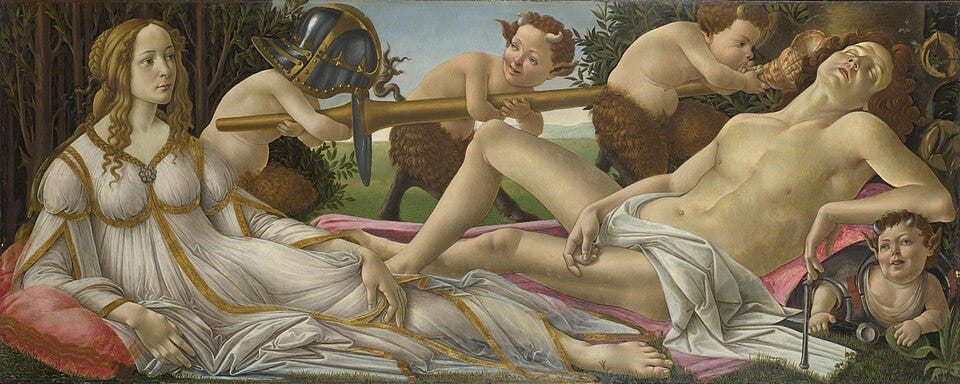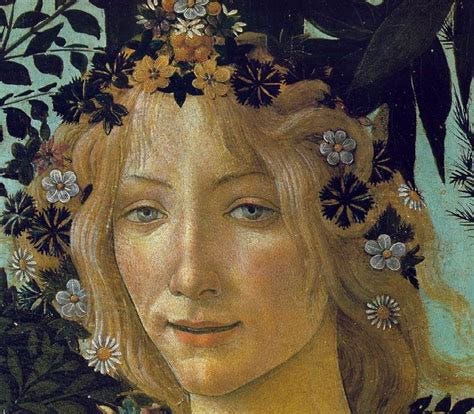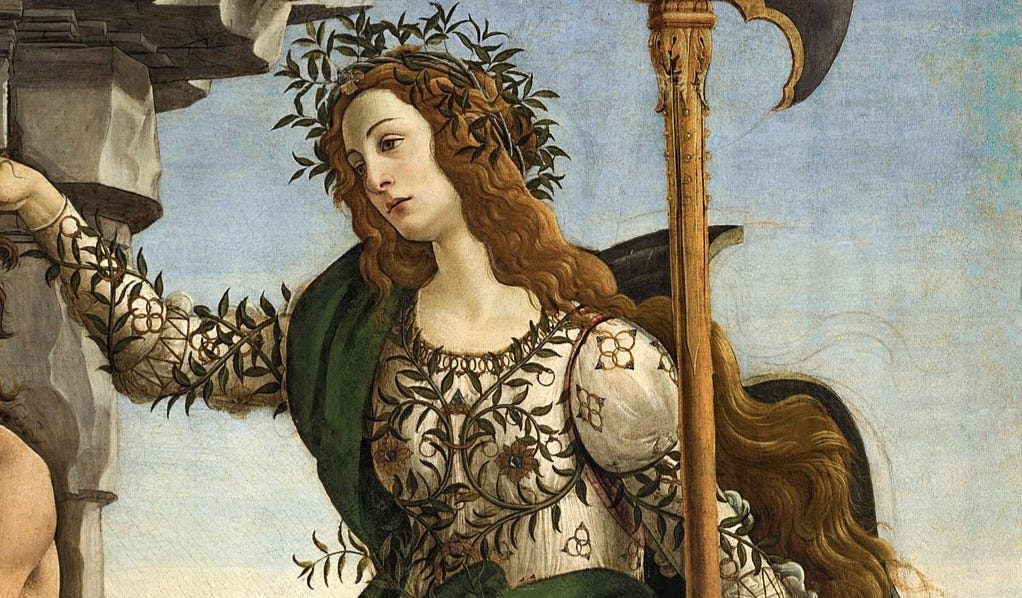The Many Faces Of Simonetta
When beauty ruled, one woman ruled above them all.
Welcome to Monday's edition of The Culture Explorer. Today, our guest writer Endless Days of Summer takes us into one of the most culturally prolific periods of the Florentine Renaissance. She dives into the life and influence of Simonetta Vespucci, the woman who became not just a muse, but the face of an era. Through her image, Endless Days of Summer provides a glimpse of the ideals, obsessions, and beauty that defined a civilization at its peak.
Later in the premium section, Endless Days of Summer further explores the Renaissance triangle of Botticelli, Giuliano de’ Medici, and Florence itself, revolving around this extraordinary woman. She discusses the origin and power of the Renaissance muse and uncovers how the many faces of Simonetta became a lasting symbol of ambition, elegance, and idealized femininity. At the end, Culture Explorer wraps up with some of the greatest artworks of Botticelli.
THE MANY FACES OF SIMONETTA
Florence, January 29, 1475 - La Giostra
Under the cold winter sun, the crowd surged into Piazza Santa Croce like a tide. Noblemen, poets, merchants, all angling for a glimpse of the day's spectacle, but it wasn’t just the joust they’d come to see. It was her.
From the Medici balcony stood Simonetta Vespucci with her face framed in shadow and light. Below her, Giuliano de’ Medici entered the arena to the roar of the crowd, his lance poised, his armor gleaming, but all eyes went to the standard he carried. The image was unmistakable: painted by Botticelli himself, the banner showed Simonetta as Pallas Athena, divine and untouchable, crowned in glory. Beneath her face, the words: La Sans Pareille. The Unparalleled.
This was no mere game. This was a coronation.
.
I. La Bella Simonetta
Centuries pass. Empires fall. Styles shift. But one face remains, ethereal and enduring. She was barely twenty when she died, and yet Simonetta Vespucci is immortal.
Immortal in the way only a muse can be: not through her words, or deeds, or even history’s facts, but through a cascade of images that reappear again and again, across canvas and time. Her beauty wasn’t merely praised, it was painted into myth.
This is not a tale of dates and titles. It’s the story of a woman whose face became a symbol, whose silence became the language of beauty, and whose presence haunted two men: one a warrior, the other an artist.
Simonetta lives not only in the soft folds of Botticelli’s Primavera or the sacred geometry of The Birth of Venus, she lives in the question: what makes a face unforgettable?
.
II. The Face That Lit Florence
She was sixteen when she stepped into history.
Simonetta Cattaneo met Marco Vespucci in the marble hush of San Torpete, under the eyes of the Genoese elite. He was a Florentine banker, young, well-bred, connected—a Vespucci, cousin to Amerigo, friend to the Medici. He saw her. That was enough.
Perhaps it was the otherworldly stillness of her face, with her golden hair woven into braids catching the light like a veil of dawn. Or the translucent depth of her gaze, blue and endless as the sky itself. Whatever it was, it was all it took.
The marriage was arranged swiftly. Florence welcomed her not as a foreign bride but as an omen, a figure whose beauty felt foretold. Lorenzo de’ Medici himself hosted the wedding reception at the Villa Careggi. By the end of that season, her name was being whispered in poems. Within months, artists were watching her more closely than queens. Botticelli began sketching her again and again, until her likeness became myth.
She had no title, but left a dynasty of images in her wake.
She did not rule, yet Florence bowed.
.
III. The Crowning of Simonetta and the Politics of Beauty
When Giuliano rode into that tournament with her face stitched into his banner, he didn’t just ride for glory. He made a public claim—on beauty, on myth, on Florence itself. The tournament was choreographed not simply as courtly entertainment but as a visual poem of dominance. In choosing Simonetta as his Queen of Beauty, Giuliano wasn’t just exalting a woman, he was making a statement. Of love, yes. But also of power. Love became power. Beauty became politics.
This was how the Medici operated: through beauty, spectacle, and myth. They didn't crush rivals with swords, they drowned them in culture. Giuliano's victory was recorded in verse by Poliziano, his devotion canonized in a poem that made Simonetta immortal.
Behind the velvet and trumpets, the message was clear: in Florence, power wore the face of beauty, and the Medici held the mirror.
Whether Giuliano loved her or needed her, we will never truly know. But on that winter day, with her image fluttering above the crowd and her name whispered like a prayer, Florence crowned not a queen, but a goddess.
.
IV. The Prince, the Painter, and the City — A Renaissance Triangle
Giuliano and Simonetta: A Courtly Love?
Simonetta was already Florence’s most celebrated beauty, crowned publicly as the Queen of the Tournament. Yet this was not mere flattery. The poems of Poliziano, commissioned to commemorate the event, danced around their affection in florid allegory. But the gestures were clear. Giuliano had made her his inspiration, his lady, his public muse.

The connection between them was not clandestine, it did not need to be. Florence, after all, was a city of courtly gestures and strategic passions. Lorenzo de’ Medici, Giuliano’s brother, was famously entangled with his own mistress. Affairs of the heart were allowed to flourish so long as they bowed to the decorum of symbolism and song.
What made this courtly affection striking was not merely its public display, but the profound grief it left behind. Giuliano's sorrow was immortalized in Botticelli's portrait, where a turtledove perched on a dead branch symbolizes eternal mourning. A silent testament to a love that, though brief, left an indelible mark.
When Simonetta died the following year of the tournament at just twenty-two, Florence mourned, but Giuliano, it is said was inconsolable. Her father-in-law, a man of stature himself, gave Giuliano all her garments and her portrait. Her husband, Marco Vespucci, remained diplomatically silent and remarried shortly after her passing.
In a city that masked truths in metaphor, Giuliano’s grief was, this time, all too real. The kind of sorrow that lingers like perfume on embroidered silk. The kind that bent a powerful man not with scandal, but with silence.
Keep reading with a 7-day free trial
Subscribe to The Culture Explorer to keep reading this post and get 7 days of free access to the full post archives.







